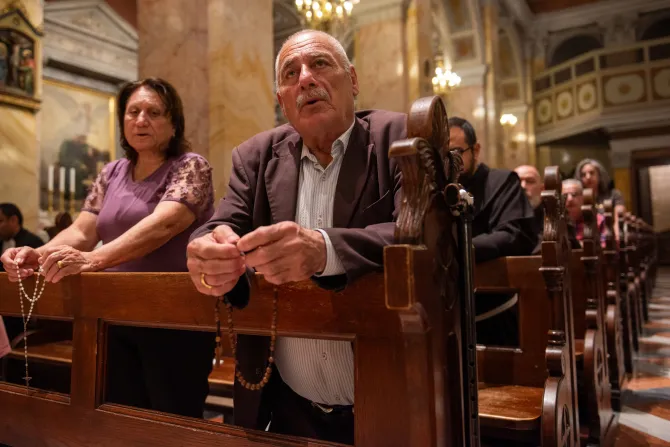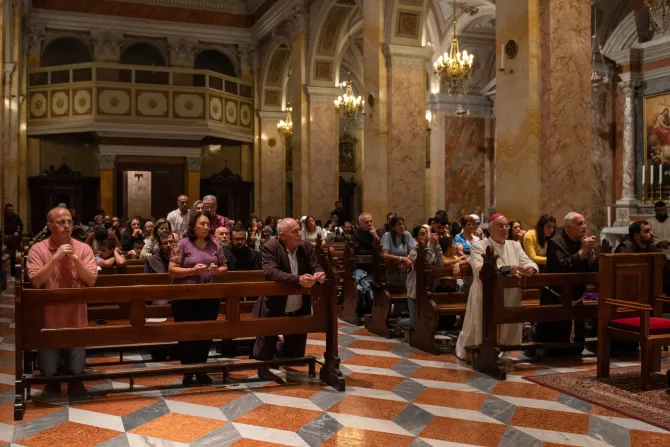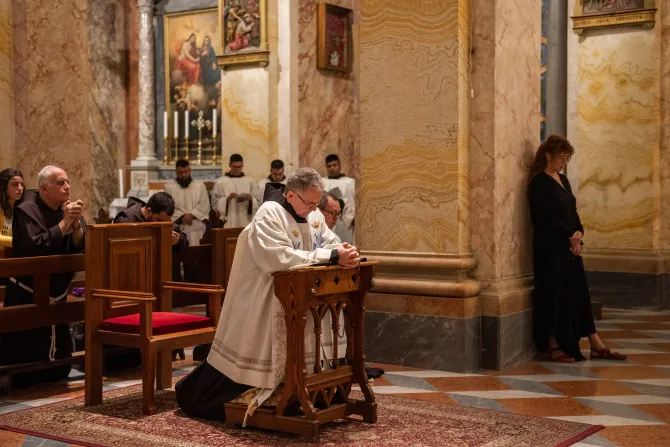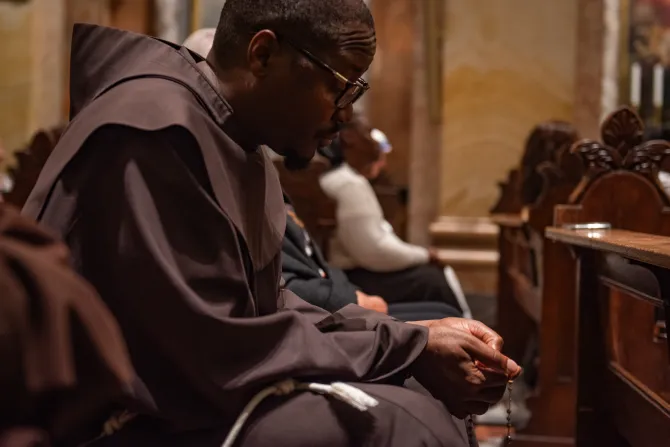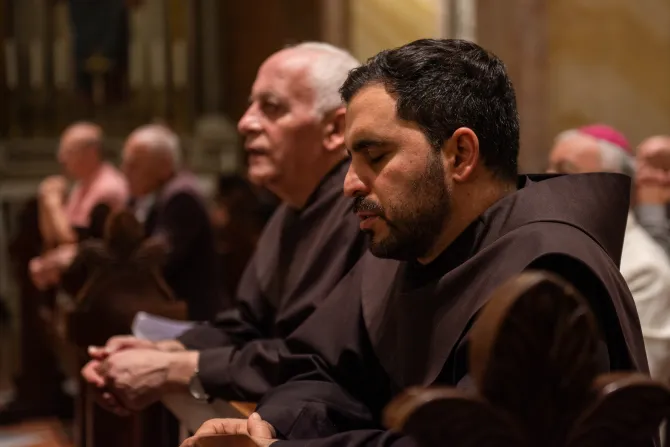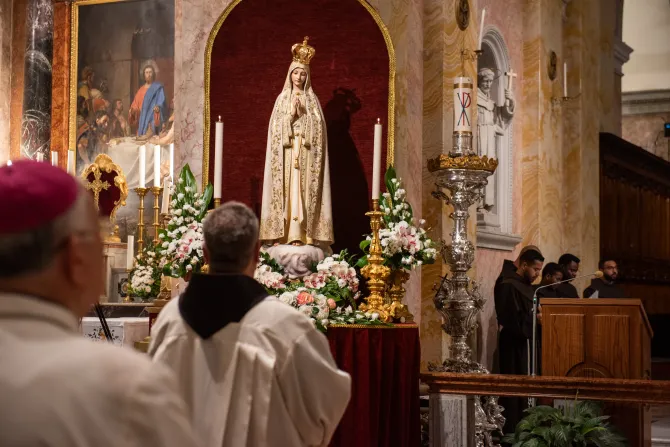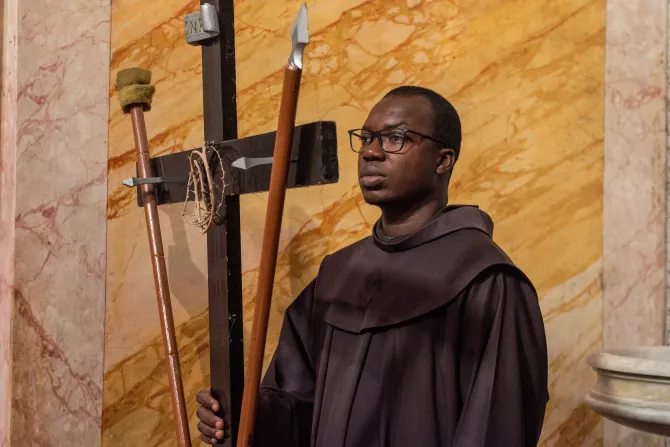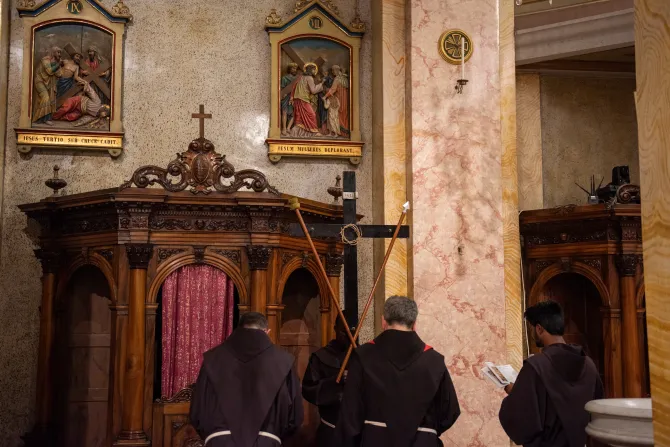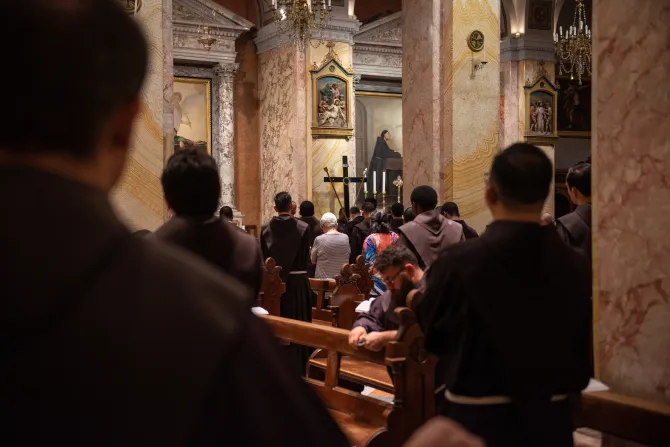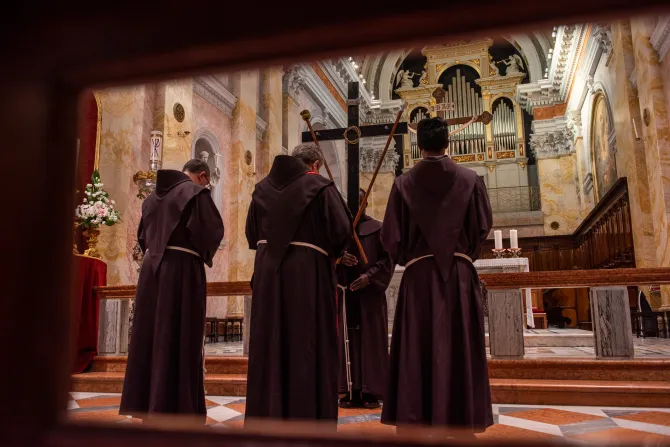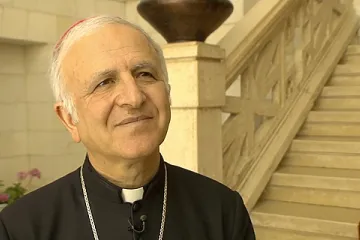Jerusalem, Oct 16, 2023 / 14:13 pm
This past weekend, Franciscan friars in Jerusalem gathered together with the faithful for two prayer services dedicated especially to peace, marking one week since war erupted between Israel and Hamas.
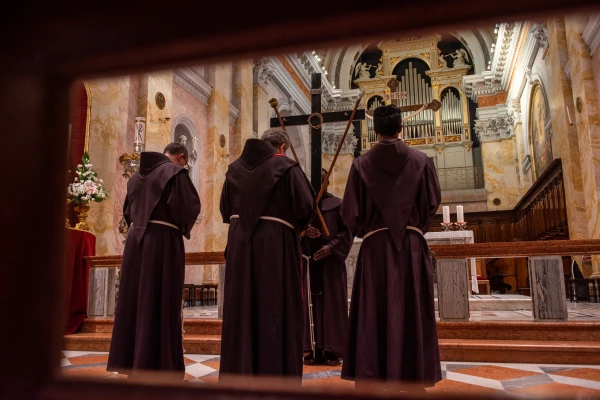
The first took place on Friday, Oct. 13 — the Via Crucis. This is a tradition that Franciscans have carried on for centuries, walking through the Old City of Jerusalem on the Via Dolorosa every Friday: from the Sanctuary of the Flagellation (where Jesus’ condemnation to death and flagellation is remembered) to the Holy Sepulchre, which encompasses the sites of Jesus’ death, burial, and resurrection.
This tradition continued even during the COVID-19 pandemic; however, this time the Via Crucis was held inside St. Saviour’s Church for security reasons. This was a rare occurrence and has only happened before during crises of public order.
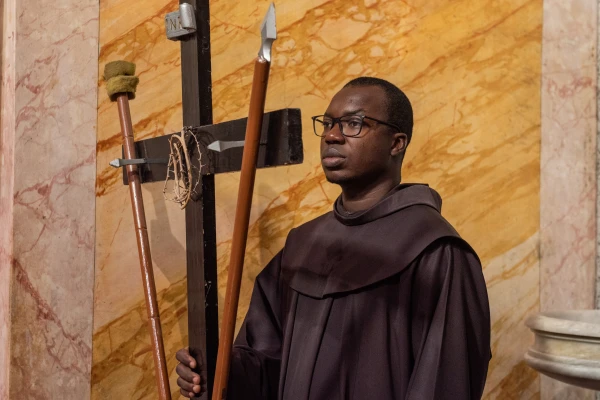
A small procession — formed by the custos of the Holy Land, Father Francesco Patton, the master of ceremonies, and two friars — walked along the perimeter of the church, stopping at each station. The cross at the front of the procession bore symbols of Jesus’ Passion: the sponge, which was soaked in vinegar and brought to Jesus’ lips when he said “I thirst”; the crown of thorns with which Roman soldiers crowned him as king to mock him; and the spear that a Roman centurion used to pierce his side to ensure his death.
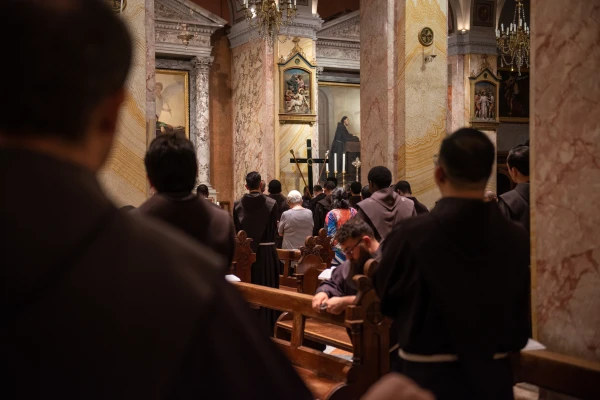
Inside the church, the community of the friars of St. Saviour along with some nuns and a few faithful joined in prayer. Before the final blessing, a moment of silence was observed — as before the tomb of Jesus in the Holy Sepulcher’s edicule — to invoke the gift of peace.
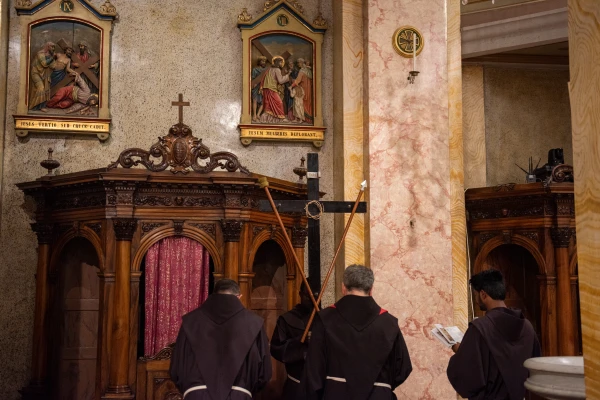
Then on Saturday, Oct. 14, in the Church of St. Saviour a special time of prayer took place with the recitation of the rosary for peace at the feet of the statue of Our Lady of Fatima.
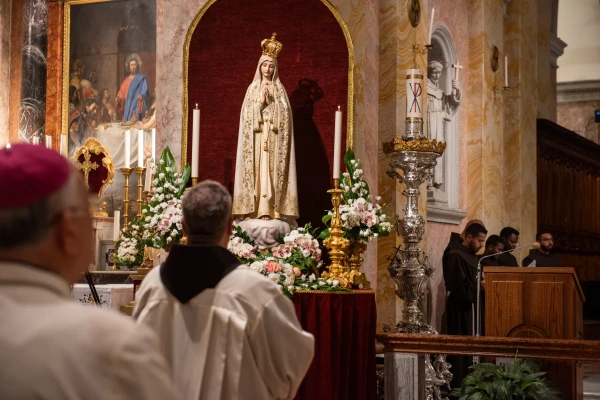
In addition to the friars and religious men and women, there was significant participation from the local Christian community.
The five mysteries meditated upon were chosen based on an observation by Pope John Paul II in his 2002 apostolic letter Rosarium Virginis Mariae.
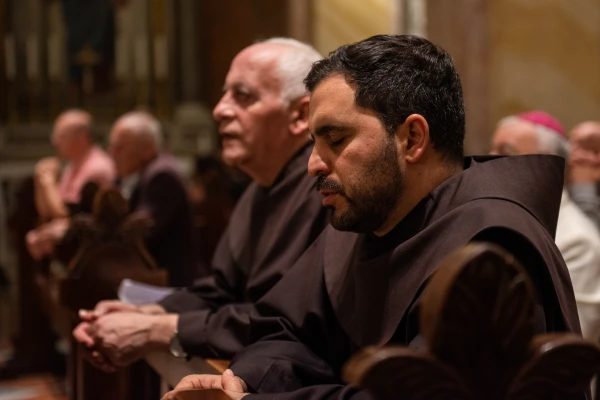
“The rosary is by its nature a prayer for peace,” the late pope wrote. He explicitly mentioned five rosary mysteries: the birth of Jesus in Bethlehem (joyful mysteries), the proclamation of the kingdom of God (mysteries of light), the death of Jesus on the cross (sorrowful mysteries), the glory of the risen Christ, and the crowning of Mary as Queen of Peace (glorious mysteries).
After the singing of the Salve Regina and the Litany of the Blessed Virgin Mary, the Prayer for Peace by St. John Paul II was recited: “Look with special attention upon the land in which you gave birth to Jesus, a land that you loved together with him, and that is still so sorely tried today. Pray for us, mother of hope!”
(Story continues below)
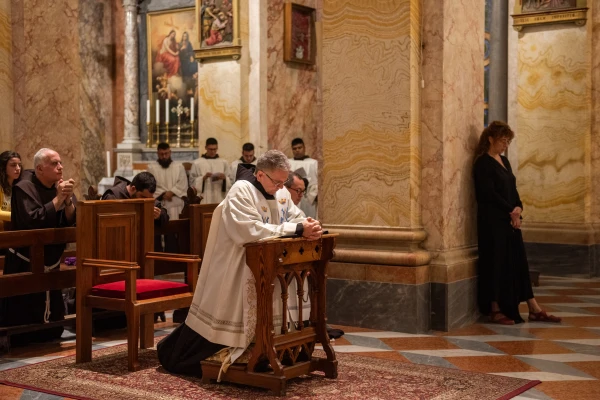
The prayer service concluded with the final blessing and the song “Sub Tuum Praesidium.”
This Tuesday, Oct. 17, the Assembly of Catholic Ordinaries of the Holy Land has called for a day of prayer and fasting for peace. This will be a time of Eucharistic adoration presided over by Cardinal Pierbattista Pizzaballa, the Latin patriarch of Jerusalem, and will be held in the church of the Latin Patriarchate, Jerusalem’s co-cathedral.
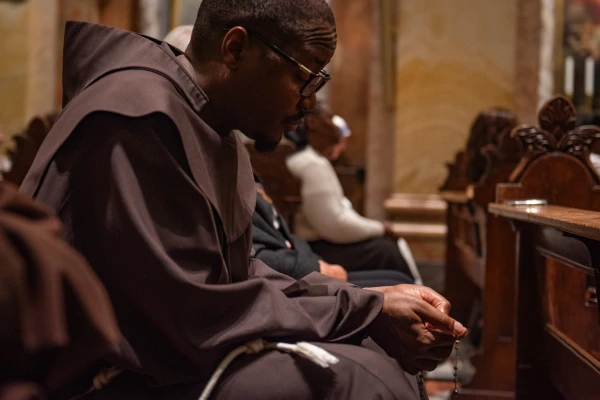
In the sanctuaries of the Holy Sepulcher (Jerusalem) and the Nativity (Bethlehem), celebrations will also be held according to the Status Quo with a specific intention for peace. (The Status Quo is an understanding among religious communities regarding the holy sites.)
In the Basilica of the Annunciation in Nazareth, the Blessed Sacrament will be exposed throughout the day and a special program of prayer for peace will take place, including Masses, Eucharistic adoration, the recitation of the rosary, and the divine mercy chaplet.
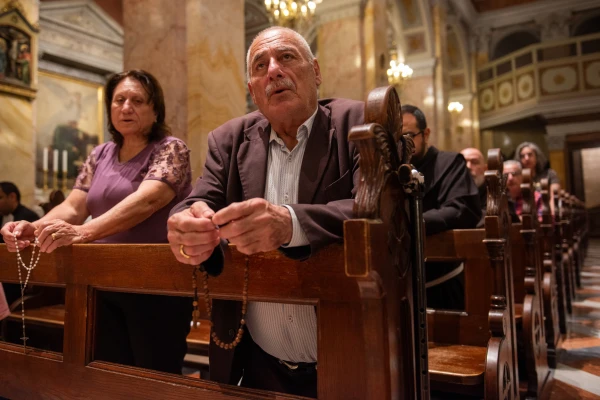
During the Angelus prayer on Oct. 15, Pope Francis invited all believers to join the day of prayer and fasting for peace, stating: “Prayer is the meek and holy force to oppose the diabolical force of hatred, terrorism, and war. I invite all believers to join with the Church in the Holy Land and to dedicate next Tuesday, 17 October, to prayer and fasting.”


